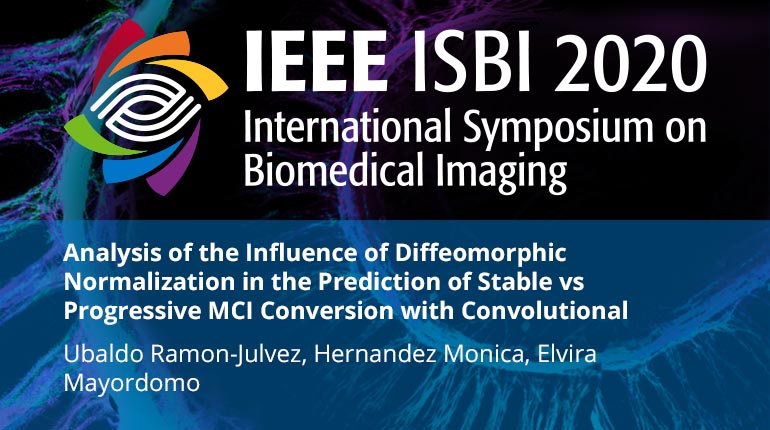
Already purchased this program?
Login to View
This video program is a part of the Premium package:
Analysis of the Influence of Diffeomorphic Normalization in the Prediction of Stable vs Progressive MCI Conversion with Convolutional Neural Networks
- IEEE MemberUS $11.00
- Society MemberUS $0.00
- IEEE Student MemberUS $11.00
- Non-IEEE MemberUS $15.00
Analysis of the Influence of Diffeomorphic Normalization in the Prediction of Stable vs Progressive MCI Conversion with Convolutional Neural Networks
We study the effect of the selection of diffeomorphic normalization in the performance of Spasov's deep-learning system for the problem of progressive MCI vs stable MCI discrimination. We considered different degrees of normalization (no, affine and non-rigid normalization) and two diffeomorphic registration methods (ANTS and BL PDE-LDDMM) with different image similarity metrics (SSD, NCC, and lNCC) yielding qualitatively different deformation models and quantitatively different degrees of registration accuracy. BL PDE-LDDMM NCC achieved the best performing accuracy with median values of 89%. Surprisingly, the accuracy of no and affine normalization was also among the highest, indicating that the deep-learning system is powerful enough to learn accurate models for pMCI vs sMCI discrimination without the need for normalization. However, the best sensitivity values were obtained by BL PDE-LDDMM SSD and NCC with median values of 97% and 94% while the sensitivity of the remaining methods stayed under 88%.
We study the effect of the selection of diffeomorphic normalization in the performance of Spasov's deep-learning system for the problem of progressive MCI vs stable MCI discrimination. We considered different degrees of normalization (no, affine and non-rigid normalization) and two diffeomorphic registration methods (ANTS and BL PDE-LDDMM) with different image similarity metrics (SSD, NCC, and lNCC) yielding qualitatively different deformation models and quantitatively different degrees of registration accuracy. BL PDE-LDDMM NCC achieved the best performing accuracy with median values of 89%. Surprisingly, the accuracy of no and affine normalization was also among the highest, indicating that the deep-learning system is powerful enough to learn accurate models for pMCI vs sMCI discrimination without the need for normalization. However, the best sensitivity values were obtained by BL PDE-LDDMM SSD and NCC with median values of 97% and 94% while the sensitivity of the remaining methods stayed under 88%.
 Cart
Cart Create Account
Create Account Sign In
Sign In





